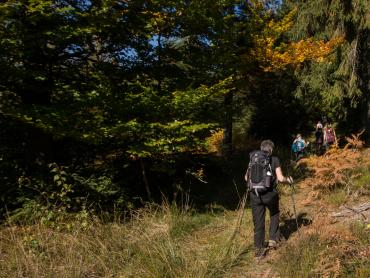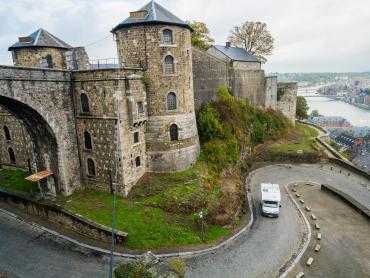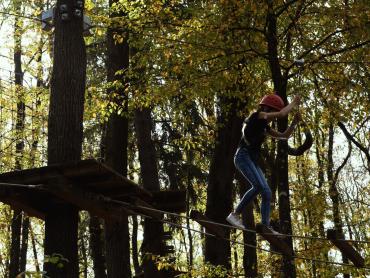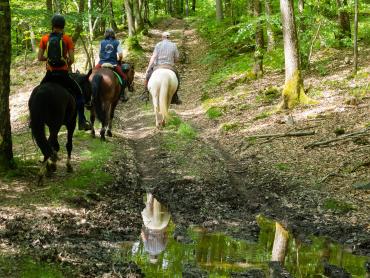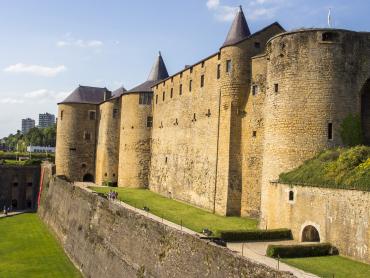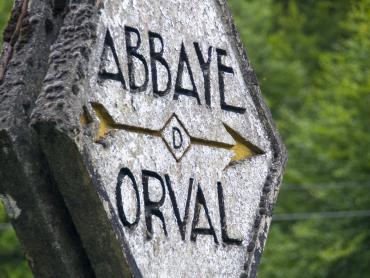The old Chatel-Chéhéry Abbey
The southern Ardennes region is largely covered by Argonne Forest. In the Middle Ages, the forest was immense. Abbeys were to be established there, developing forestry and glassmaking industries.
À Chéhéry
A - Chatel-Chéhéry - The abbey Voir sur la carte
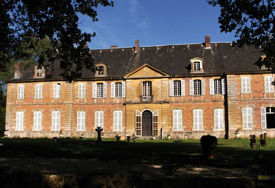
In the Middle Ages, the abbeys of Chéhéry and Montiers-en-Argonne (Marne) and of Lachalade (Meuse) were established in Argonne Forest: the monks’ task was to overpower the devilish forces and Celtic beliefs that haunted the region. To do this, they cleared the land – to excess. Razed in 1657, Chéhéry Abbey was to be rebuilt at the end of the 17th century. The classical, harmonious façade is a fine illustration of the Cistercian order.
Today a substantial edifice of bricks and stone still remains, the former abode of priors and monks. The courtyard is flanked by two pavilions (outbuildings and shed).
Walking

The Sergeant York circuit
Alvin York (1887-1964) was one of the most famous Americans of the Great War. A corporal in the 328th Infantry Regiment of the 82nd Infantry Division, he repulsed a bayonet attack, destroyed a nest of German machine guns and saved his battalion from defeat on 8 October 1918.
A historical path (three kilometres, starting from the village and dotted with informative panels) takes you through the scenes of these battles. Guided tours possible upon request.
Information: Café pour Tous - Rue Laloy-Chenet - Châtel-Chéhéry - Tel. 03 24 30 79 95.
À Erxermont
B - The Ariétal viaduct Voir sur la carte
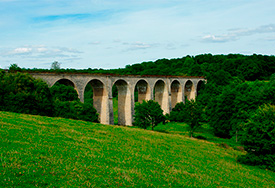
Two hundred metres long and five metres wide, with nine arches, the highest of which rises 30 metres, this structure built between 1932 and 1934 established a rail link between Reims and Sedan - Metz. It was part of a complex intended to supply the Maginot Line. Partially destroyed by the French in June 1940, it was to be repaired by the Germans in 1941. The rails were dismantled in 1943 and sent to the eastern front.
Today, bungee jumping is organised from one of the highest arches by the company Adrénaline Elastique.
À Chéhéry
C - Argonne Forest
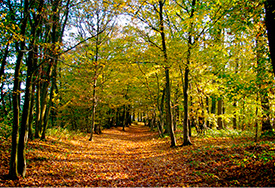
Argonne or ‘land of woods’ in Celtic, is one of the loveliest forests in France. It once covered the entire southern part of the department not, as is all too often thought, as a huge, green expanse of thorn bushes, but as a superb cluster of tall trees. In 1914, artillery ploughed through this natural heritage turning it inside out and destroying it. After the war, they quickly replanted, too quickly, with coniferous trees that were not suited to the region. Over the past few years, reforestation and good forest management have re-established the paths of days gone by, leading walkers once again to a land of gentle dreams.
Tip
This 80,000-hectare massif is criss-crossed by 400 kilometres of paths. A topo guide with 12 themed circuits is on sale at the tourist office.
Did you know?
In 1972, Pierre Deom, a teacher in Boult-aux-Bois (at the heart of the Ardennes Argonne), left the school to create an educational newsletter on nature. It soon became a reference. Superbly illustrated, ‘La Hulotte’ is now the most widely read nature journal.
